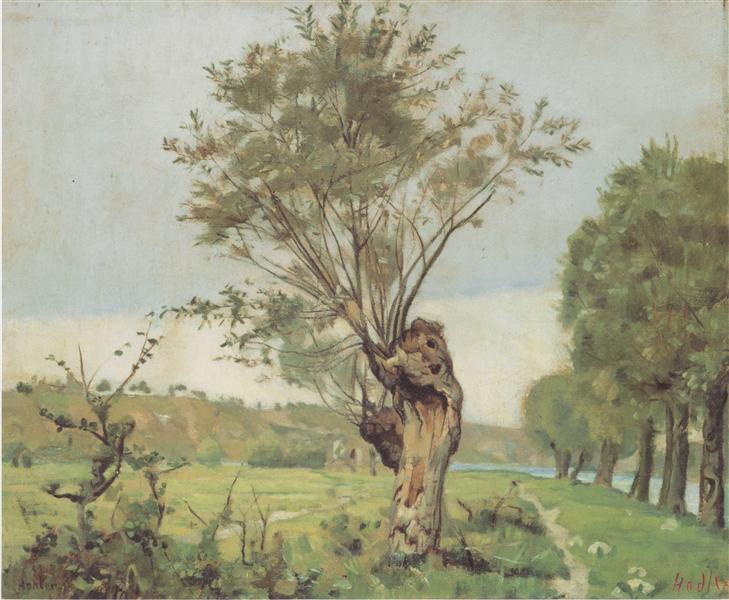Description
The painting "Pastos at the Crossing of Geneva - 1878" by Ferdinand Hodler could go unnoticed to the naked eye, but a detailed inspection reveals the subtleties and mastery of an artist in full mastery of his abilities. This seemingly simple landscape is a fascinating representation of the crossing of grasslands in Geneva, where nature is the true protagonist.
The work, executed in 1878, falls within an early stage in the career of the Swiss artist, when Hodler had not yet completely embraced the symbolism and characteristic style of symbolism and "parallelism" that would define him in later years. However, even in this formative stage, its ability to capture the serenity of the Swiss landscape is observed. The choice of such a quiet and bucolic scenario can reflect not only Hodler's personal affinity for his homeland, but also a conscious search for exalting the intrinsic beauty of nature.
As for the composition, the work presents a horizontal disposition that evokes a sense of vastness and tranquility. Green grasslands dominate most of the canvas, extending from the foreground to enter the distance. This generous use of green space, combined with the low horizon line, invites the viewer to enter the work, almost as if they were walking through those same grasslands.
At the chromatic level, Hodler shows a palette of terrible and natural colors that accentuate the wisdom of the environment. The green of the pastures is harmonically contrasted with the blue and gray tones of the sky, creating an atmosphere of stillness. The brushstrokes, although thorough, denote freedom and fluidity that reveal the security of the painter in their technique. However, what stands out most in the chromatic choice is the way Hodler manages the light; The partially cloudy sky suggests a soft and diffuse light, projecting soft shadows that give biker hills and deepen the feeling of immensity.
Unlike some of their subsequent works, where human figures have a prominent role, in this painting Hodler opts to do without the human figure. This choice does not remain dynamism to the composition, but, on the contrary, it reinforces the prominence of the natural scenario. The absence of human elements makes the viewer focus on the serenity and magnificence of the landscape itself, relieved worldly distractions. The grassland seems to vibrate with its own life and the stillness of the environment is permeated in the observer, evoking an internal reflection about the connection with nature.
It is also pertinent to mention that "Pastures at the Crossing of Geneva" shares stylistic and thematic similarities with other works of Hodler's landscapes, such as "Lake Thun with the Nien" (C.1904) or "The Air Current" (C .1908). These works reflect their evolution towards a more structured and ritated style, but without losing the contemplative essence that is already perceived in previous works like this.
In summary, "Pastures at the Crossing of Geneva - 1878" is an eloquent testimony of Ferdinand Hodler's talent to capture and highlight stillness and the majestic simplicity of nature. The work foreshadows the evolution of its style, underlining an emotional and aesthetic depth that would continue to refine over time, consolidating it as one of the great masters of Swiss art.
KUADROS ©, a famous paint on your wall.
Hand-made oil painting reproductions, with the quality of professional artists and the distinctive seal of KUADROS ©.
Art reproduction service with satisfaction guarantee. If you are not completely satisfied with the replica of your painting, we refund your money 100%.

